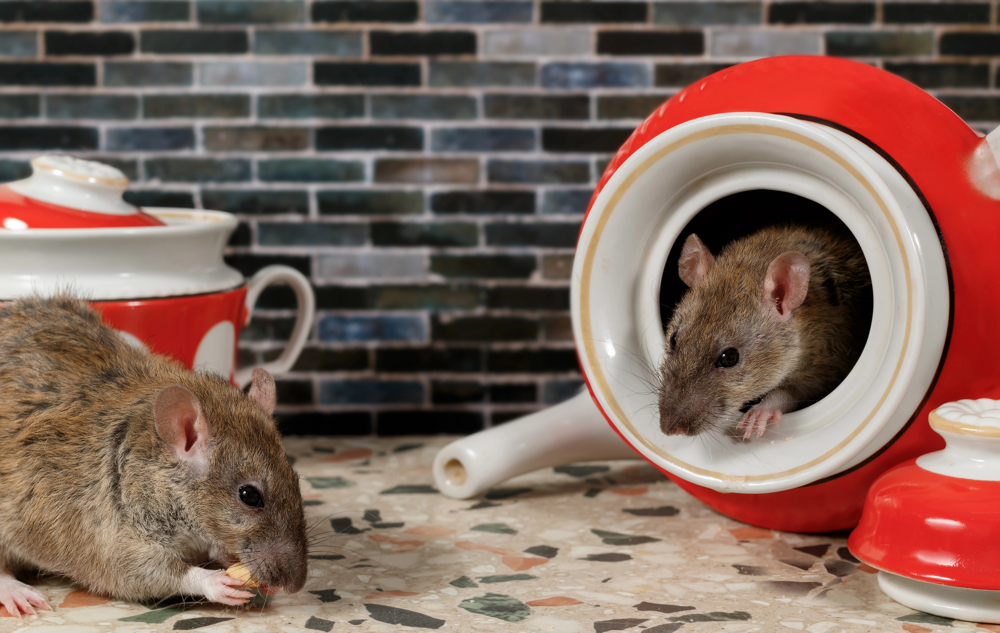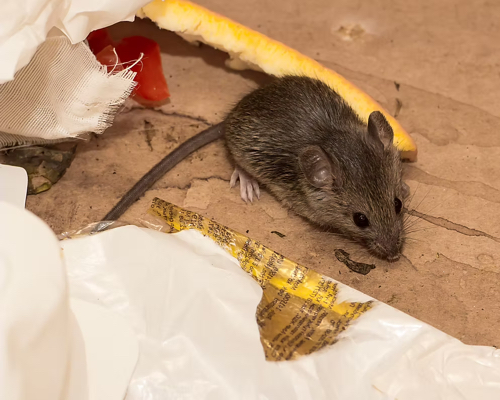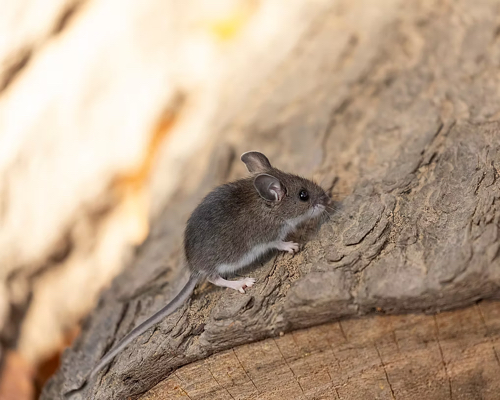Paramount Rodent Management
House mice, Deer mice, and Norway rats are the most likely species of rodents to infest your home or business on Long Island. Rats and mice are different species, cannot mate with each other, and rarely infest the same areas at the same time. Some things they do share in common is that they both can spread disease, cause allergies, and damage property.
The clear identification of rodents is critical to understanding the health risks associated with each species and implementing proper prevention and control.
The technicians at Paramount Pest Management are experts in the biology and habits of rodents that invade homes and businesses on Long Island. We use the latest innovations and technology in pest management to eliminate them safely and effectively.

Mice and rats are covered in our comprehensive and affordable recurring Home Pest Protection Plan (HPP), which provides around the clock pest protection. We also offer 30-day plans to eliminate and control rodents. All Paramount Rodent Management Plans are backed by a re-treatment warranty protecting your home or business against re-infestation.
Need Help with Pests?
Protect Your Home - Get A Quote Now!
The House Mouse (Mus musculus)
One of the most common pests on Long Island, the house mouse is a small, adaptable rodent. With its excellent climbing ability and preference for warm indoor spaces, the house mouse frequently invades homes and businesses, seeking food and shelter year-round.
What do House Mice Look Like?
Where do House Mice Live?
House mice live inside homes, buildings, and outdoors (where they are referred to as “field mice”). They prefer to nest in dark, secluded areas and often build nests out of paper products, cotton, packing materials, scraps of wall insulation and fabrics.
House Mouse Behavior
House Mouse Health & Property Threats
House mice can cause serious property damage by eating and contaminating food, chewing on personal items, and they are known to start electrical fires by gnawing on wires inside homes and cars.
The Deer Mouse (Peromyscus maniculatus)
The Deer mouse is a small rodent commonly found in wooded areas, grasslands, and rural areas on Long Island. Recognizable by its large eyes and white fur bellies, the deer mouse is an agile climber and jumper, often nesting in sheds, garages, and attics. The deer mouse’s bicolored tail is the easiest feature to distinguish it from the house mouse.
What do Deer Mice Look Like?
The Deer mouse got its name because its fur coloration resembles that of the white-tailed deer, which is gray or tawny brown on top with a white underbelly. Adult deer mice are about 7 inches long from their nose to the end of their tail.
Where Do Deer Mice Live?
The Deer mouse is commonly found in rural or semi-rural areas. They typically live outdoors in quiet, wooded areas, but they can also invade homes and other structures.
Deer mice primarily nest outdoors inside worn fence posts, hollow tree logs, tree stumps, and in piles of leaves and other debris. Outdoor nests are made of stems, twigs, leaves, roots, and may be lined with feathers or fur. The foraging range of a deer mouse nesting outdoors can be up to an acre or more.
Deer mice also prefer to invade places less frequented by people and pets, such as vacation homes, garages, sheds, and other outbuildings, especially during the winter. Deer mice are also known to nest inside abandoned/stored vehicles and equipment where they chew into cushioned seats and gnaw on electrical wires.
DEER MOUSE BEHAVIOR
Deer mice are good climbers and can enter homes and buildings by using trees, branches, shrubs, and vines as bridges to gain access into attics and upper levels. Basements are also ideal living spaces for deer mice, and a common nesting site is on top of sill plates in the basement or crawlspace, particularly in the corners. When living inside a structure, the foraging range of deer mice is about 30 feet from the nest.
Deer mouse nests inside homes and other structures can be more than a foot in diameter and are lined with shredded paper, scraps of insulation, strips of cloth, and/or stuffing from furniture. Deer mice urinate and defecate inside their nests. and when the nest becomes foul after a few weeks, the female moves on and builds a new nest nearby. This habit can result in infested areas with large numbers of odorous, abandoned nests, which also increases the risk of Hantavirus exposure.
Deer Mouse Health & Property Threats
Like House mice, deer mice pose a significant health threat because they too can spread disease and contaminate food. However, Deer mice are primarily responsible for transmitting Hantavirus to humans. This virus is transmitted primarily by the inhalation of dust particles contaminated with the urine, feces or saliva of infected deer mice.
Like all rodents, deer mice can also cause serious property damage by eating and contaminating food, chewing on personal items, and they are also known to start electrical fires by gnawing on wires inside homes and cars.
The Norway Rat (Rattus norvegicus)
The Norway rat, also known as the brown rat, is widespread across Long Island, particularly in urban and coastal areas. These large rodents are burrowers by nature, often nesting beneath buildings, in basements, and near waterfronts, where food and shelter are abundant.
What Do Norway Rats Look Like?
The Norway Rat is also called the street or sewer rat, and is believed to be of Asian origin, brought to the U.S. on ships from other countries in the 1700s. Norway rats have fairly poor vision and are colorblind. Despite these deficiencies, their hearing, smell, touch and taste are highly developed. They are not extremely agile, but capable of running, climbing, jumping, and swimming.
The Norway rat has brown fur with black hairs mixed in, and they sometimes look dark gray depending on the filth they are exposed to, and/or the location of their nest. Their bellies are usually a lighter color, from gray to off-white and yellowish blends. Norway rats have small eyes and ears, and their tails are shorter than their body length.
Where Do Norway Rats Live?
Norway rats are social pests that live in underground burrows and they often build their nests close to other Norway’s. This means that where there is one burrow, there are likely others close by. Norway rat burrows have at least one entrance hole and at least one emergency exit, or bolt-hole, which is usually hidden under grass, debris or other things.
Outdoors, Norway rats typically live in fields, farmlands and man-made structures. They often burrow in soil near riverbanks, under piles garbage and woodpiles, under concrete slabs, and along railroad embankments and streams.
Inside homes, Norway rats typically enter in the fall when food and water becomes scarce outside. Norway’s can fit through a hole the size of a quarter, and once inside a home, they often nest in basements, piles of debris or undisturbed items. However, they will also nest on floors above basements and they love sewers. Although rare, Norway rats may also nest in attics.
Norway Rat Behavior
Norway rats are nocturnal, instinctually foraging for food at dusk, and before dawn. They have hearty appetites, eating several times each night, and again during the daytime. Norway’s carry the food they find to quiet places to eat or to stockpile. Norway rats will eat practically anything, but they prefer meat, fish, cereals, and they love dog food! However, they are picky eaters and creatures of habit. If they eat something they don’t like, Norway rats will quickly develop an aversion to it, and search for another option. Once they find a favorable food source, Norway rats will return time and again.
Norway rats have front teeth (incisors) that continuously grow, so they need to keep wearing them down by gnawing on (and through) almost anything, including plastic and lead pipes, concrete, and wood. Norway’s typically use the same vertical pathway they felt out with their long whiskers to travel between their nest and sources of food and water. In fields and other rural areas, Norway’s usually travel about 100 to 150 feet away from their nest for food and water, but their range is smaller in urban areas, where they only need to venture out about 25 to 100 feet away from their home.
Norway Rat Threats
Due to their propensity to gnaw through almost anything, Norway rats can cause serious damage to landscapes, structures, equipment, and personal items, hence making them a costly threat. On the health side, the accumulation of dried rat feces can contaminate food sources, trigger allergic reactions in humans, and spread harmful bacteria, diseases and viruses like Bubonic Plague, jaundice, rat-bite fever, cowpox virus, trichinosis and salmonellosis. Norway rats can also introduce fleas into a home, which can lead to painful, itchy bites, and other health risks.
Professional Rodent Control on Long Island
The key to long-term rodent control is the identification and correction of conditions conducive to rodents. This may include changes in sanitation, landscape modification, and sealing off areas of rodent entry.Choose the local experts at Paramount to rid your home of rodents!
Following the principles of Integrated Pest Management (IPM), Paramount combines a variety of rodent control methods custom tailored to your home and level of infestation. Paramount’s brand of rodent control includes trapping methods to quickly eliminate the current infestation, and prevention methods to keep rodents from coming back. Depending on your situation, personalized Paramount Rodent Control Plans may include a combination of the following methods:
- Sealing holes inside and outside your home to keep rodents out
- Discreet and strategic placement of snap/glue traps inside your home to control the rodent population
- Installation of tamper-resistant rodent bait stations outside your home (if necessary)
- Recommendations to make your home less attractive to rodents
Rodent Trapping
Snap traps may be the oldest trick in the book, but they remain highly effective at quickly knocking down rodent populations. Snap traps are also a more humane method of rodent control than sticky traps. Where applicable, all snap traps provided by Paramount are placed inside special boxes and placed in areas where children and pets cannot easily access them.
Glue traps and multiple catch traps are also excellent tools for controlling rodents. Depending on the situation, we may also safely and discreetly place these devices inside your home or building to help eliminate and control rodents.
Exterior Rodent Baiting
Using rodenticides to control rats and mice is an effective method that has been around for centuries. With dedication to safety and compliance with material labels, federal, state and local laws, our technicians only place rodenticides inside heavy-duty plastic or metal tamper-resistant bait stations that are secured to the ground, fence, or other stationary object around the immediate exterior of your home or building.
Rodent Prevention
The key to long-term rodent control is the identification and correction of conditions that are conducive to rodents. This may include changes in sanitation, landscape modification, and sealing off areas of rodent entry.





